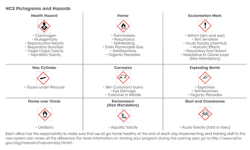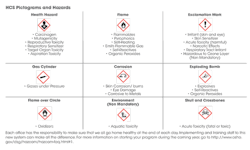Preparing for hazard communication changes in 2013
by Noel Brandon Kelsch, RDH
Consider reading: Dental Laboratories And Infection Control
http://www.rdhmag.com/articles/print/volume-32/volume-12/columns/dental-laboratories-and-infection-control.html
Consider reading: Are You Sick And Tired?
http://www.rdhmag.com/articles/print/volume-32/issue-11/columns/are-you-sick-and-tired.html
Consider reading: Pathogens From Laser Plumes
http://www.rdhmag.com/articles/print/volume-32/issue-10/columns/pathogens-from-laser-plumes.html
I recently walked into a dental lab and I was floored. I watched as a young health-care professional reached into the cold sterilization with her bare hand. She retrieved what she was looking for, but I wondered if she realized what she might be taking with her? It was not just the bacteria and viruses I was worried about. It was the chemical that she immersed her hand in that had me concerned. I took her aside and asked her to read the label with me. She was taken back as she read how this chemical could impact her bodily organs, and that overexposure could lead to death.
This past year the agency that looks at the chemical hazards that this young woman was exposed to has revised the standards and is determined to keep this young woman and those like her safe. In order to do our jobs in infection control, we must be exposed to chemicals. Knowing how to use them can allow all health-care professionals to go home healthy at the end of each day.
The U.S. Secretary of Labor, Hilda Solis, shared her concern. “Exposure to hazardous chemicals is one on the most serious threats facing American workers today,” she said. “Revising OSHA’s Hazard Communication standard will improve the quality and consistency of hazard information, making it safer for workers to do their jobs and easier for employers to stay competitive.”
It does not get easier than this
The Hazard Communication Standard (HCS) used to be a challenge to understand and implement in the dental setting, and it was frequently very confusing. The change that has been put into place aligns the program with the Globally Harmonized System of Classification and Labeling of Chemicals (GHS). This 16-point system will put in place a common and simple system of classifying chemicals, as well as place information on labels and safety data sheets. The new standards will improve the quality and consistency of the information that is available in the workplace for the safe use and handling of hazardous chemicals. Knowing the specifics of handling, storing, and using chemicals is the key to keeping people safe. By December 2013 this must be in place in all dental offices.
So what are the changes?
In order to ensure chemical safety in the workplace, information about the identities and hazards of the chemicals must be available and understood by workers. OSHA’s HCS requires the development and dissemination of such information:
Currently: Chemical manufacturers and importers are required to evaluate the hazards of the chemicals they produce or import, and prepare labels and safety data sheets to convey the hazard information to their downstream customers.
- All employers with hazardous chemicals in their workplaces must have labels and safety data sheets for their exposed workers, and must train them to handle the chemicals appropriately.
Major changes to the Hazard Communication Standard
- Hazard classification: Provides specific criteria for classification of health and physical hazards, as well as classification of mixtures.
- Labels: Chemical manufacturers and importers will be required to provide a label that includes a harmonized signal word, pictogram, and hazard statement for each hazard class and category. Precautionary statements must also be provided.
- Safety data sheets: Will now have a specified 16-section format.
- Information and training: Employers are required to train workers by Dec. 1, 2013, on the new label elements (they must be familiar with them, understand how to use them, and be able to access the information effectively), and safety data sheets format in order to facilitate recognition and understanding. RDH
The new format of the 16-section Safety Data Sheet (SDS) should include the following sections
Section 1. Identification
Section 2. Hazard(s) identification
Section 3. Composition/information on ingredients
Section 4. First aid measures
Section 5. Firefighting measures
Section 6. Accidental release measures
Section 7. Handling and storage
Section 8. Exposure controls/personal protection
Section 9. Physical and chemical properties
Section 10. Stability and reactivity
Section 11. Toxicological information
Section 12. Ecological information
Section 13. Disposal considerations
Section 14. Transport information
Section 15. Regulatory information
Section 16. Other information, including date of preparation or last revision
Sections 12-15 may be included in the SDS, but are not required by OSHA.
NOEL BRANDON KELSCH, RDHAP, is a syndicated columnist, writer, speaker, and cartoonist. She serves on the editorial review committee for the Organization for Safety, Asepsis and Prevention newsletter and has received many national awards. Kelsch owns her dental hygiene practice that focuses on access to care for all and helps facilitate the Simi Valley Free Dental Clinic. She has devoted much of her 35 years in dentistry to educating people about the devastating effects of methamphetamines and drug use. She is a past president of the California Dental Hygienists’ Association.
Past RDH Issues

